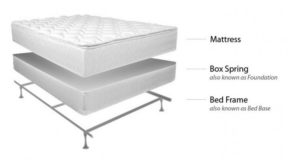As a global mattress protector manufacture, it is our duty to understand how sleeping customs different all around the world. And it, sometimes, involves confusion. For example, what is box-spring, and is it any difference between box-spring encasement and mattress encasement?
According to Wikipedia, box-spring (or divan in the UK) is a type of bed base typically consisting of a sturdy wooden frame covered in cloth and containing springs. Usually the box-spring is placed on top of a wooden or metal bedframe that sits on the floor and acts as a brace.

This bed component, under a mattress, are especially popular in the United States, Canada and Australia. Working together, the box-spring and mattress (with optional bed frame) make up a bed. It is common to find a box-spring and mattress being used together without the support of a frame underneath, the box spring being mounted directly on casters standing on the floor.
With the increasing height of mattresses, manufacturers now make box springs in different heights. Standard “high profile” box springs are 9 inches (23 cm) in height, whereas “low profile” box springs are between 5 and 5.5 inches (13 and 14 cm). The difference between the two heights is purely aesthetic and makes no difference in the support provided for the mattress.
The purpose of the box-spring is threefold:
- to raise the mattress’ height, making it easier to get in and out of bed;
- to absorb shock and reduce wear to the mattress; and
- to create a flat and firm structure for the mattress to lie upon.
Every mattress needs a protector, the same as to box-spring. However, comparing to mattress encasement, box spring encasement tend to be less expensive. According toThane Garfield, owner of Bedrooms and more, people in us tend to use cheaper material for box spring comparing with mattress protectors. That make sense when we realise most box spring encasement are required to use non-wowen as a protector.
